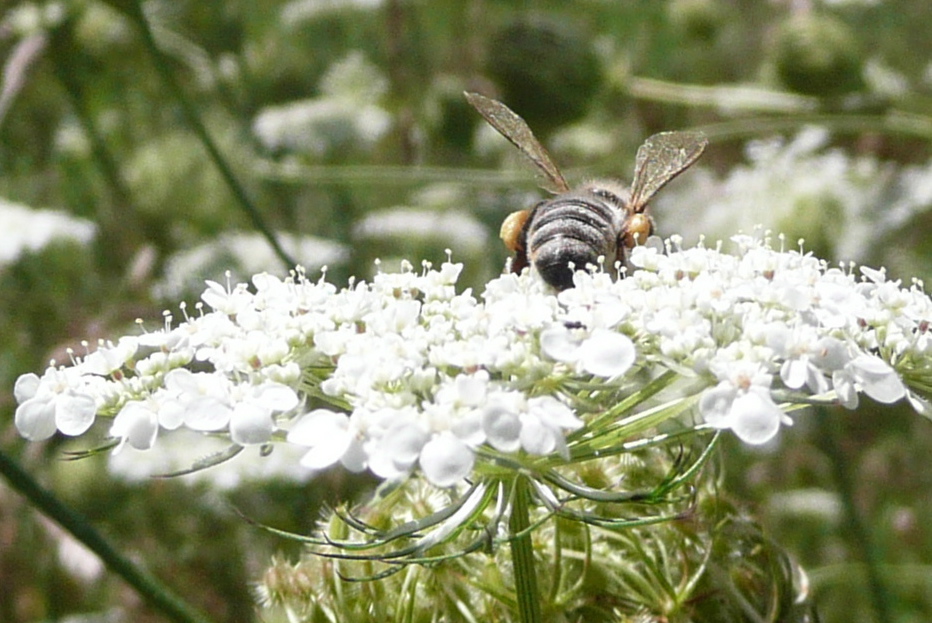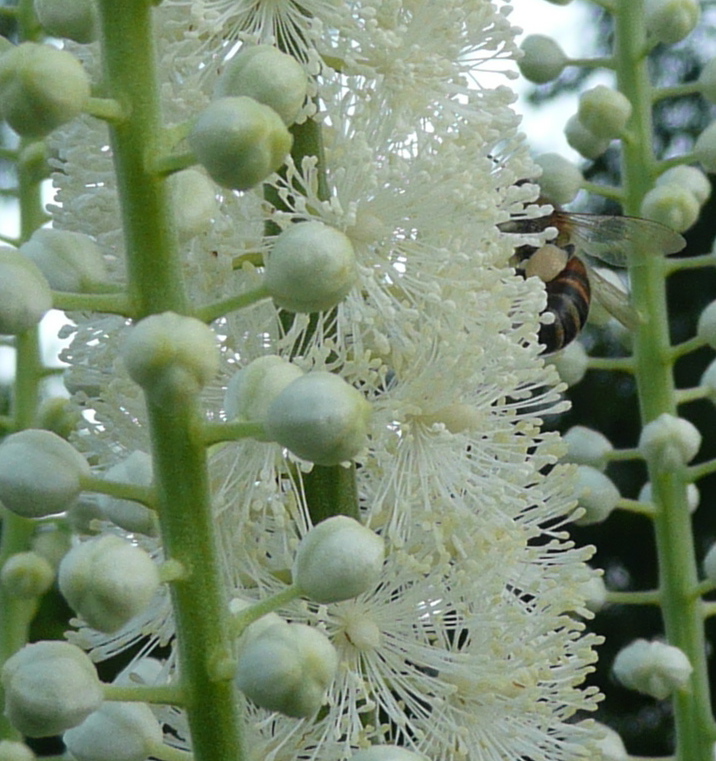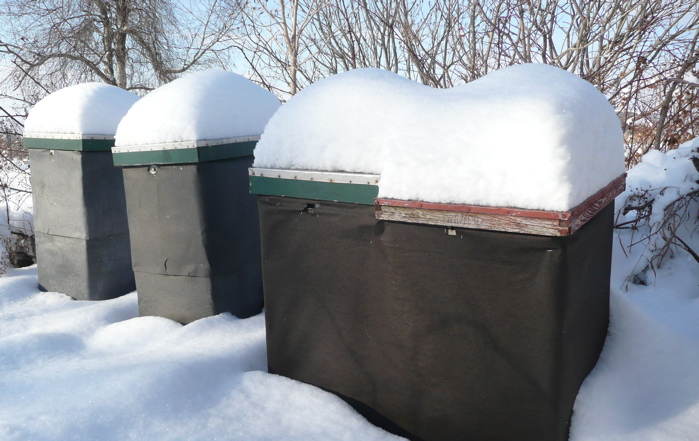Live from the hive: February 2015
“Bees in the cold” by Annie Watson, Thistle Hill Studio

We are concerned about the bees in this long bout of cold weather. At my house in central Vermont, the thermometer hasn’t gone above 32 degrees since some time in December. Did you know that honey bees do not eliminate their wastes inside the hive? To do this, they must take a “cleansing flight”, which helps to keep the brood nest healthy. The problem is, bees generally can’t fly well unless the air gets up to nearly 50 degrees. This presents a problem in long stretches of cold such as we have in the Northeast at this time of year. On a sunny day the bees will attempt a short cleansing flight. But once they leave the hive, if the air is too cold they cannot keep their wing muscles warm enough to continue flying, and many do not make it back to the hive.
Today as I skied past the hives, I saw dead bees in the snow near the entrance. Nature is harsh. We wait and hope for a break in the weather.
The Queen Anne’s Lace flower above looks like snow, but reminds us of hot summer days. It is rare to see a honey bee on this plant, since it is not one usually frequented by them.

